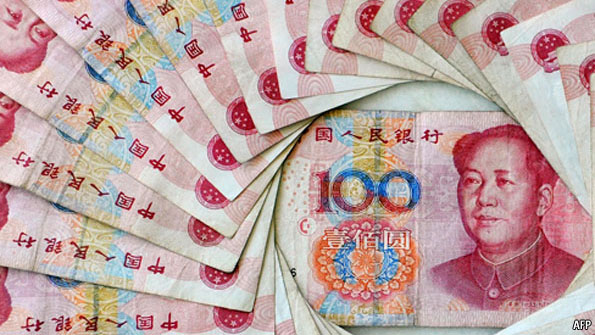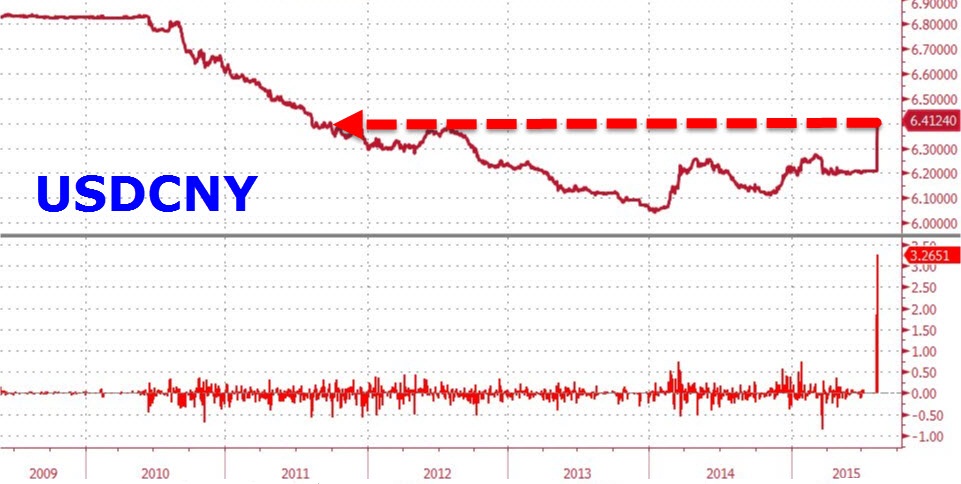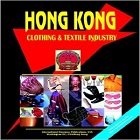FW
A policy intended to give remunerative price to cotton farmers may soon take shape if the Union Textile Ministry’s plans to hold a meet with the ministries of commerce, labour and agriculture materialises. This has come in the backdrop of Labour Minister Bandaru Dattatreya’s meet along with a 26-member delegation with Textiles Minister Santosh Gangwar. The labour minister, who belongs to Telangana, apprised the textile minister of the situation of cotton farmers, especially in the home state.
Shedding light on the accomplishment, the labour minister said the textile ministry has come out with a proposal wherein all three ministries—commerce, labour and textile, will sit together to eliminate farmers’ woes by getting remunerative prices for them. The policy will also look at means to make maximum purchase of cotton from farmers.
He also said that the textile ministry is ready to set up a textile park and also is open to the idea of setting up a cotton research centre in the state. The textile ministry has agreed to give Rs 100 crore subsidy for the setting up of the textile park. The ministry is looking for possibilities to set up a cotton corporation of India office also in the state.
The garment and textile industry in Vietnam has seen good investments from several foreign firms recently. Countries are taking advantage of opportunities created due to free trade agreements such as the Trans-Pacific Partnership (TPP) and VN-EU Free Trade Agreement and rapidly investing in Vietnam.
As per Nakajima Satoshi, Japanese Consul General to HCMC many Japanese firms have started investing in the garment and textile industry. A recent survey reveals, 60 per cent of the 500 Japanese business firms were looking at vesting in Vietnam. The garment and textile field also attracted businesses from South Korea, China, Hong Kong (China) and Taiwan (China).
Many delegations of foreign firms had learned about Vietnam’s investment environment, according to HCMC Enterprise Association. Many wanted to build garment and textile plants about 50 km from the centre of the city. Satoshis, explained why investors chose HCMC neighbouring regions. He says field surveys by Japanese trade promotion agencies in Vietnam showed it was easier for them to find land species with area of 20 hectares or larger each. Besides, rent and labour cost were low and don’t go up quickly.
Moreover foreign firms are investing in Vietnamese garment and textile industry because local businesses have vacated. Thought the country has over 2,000 companies operating in this space, most are involved in export orders. Also, the materials they use come from countries without incentives for free trade.
Vietnamese garment and textile products exported to the US and European nations would enjoy zero per cent tax rates instead of 10-30 per cent at present once the TPP and VN-EU FTA are signed.

As per a report by China Chemical Fiber Group (CCF Group), strong US dollar and sliding euro, Japanese yen and rouble against Chinese yuan made a negative impact on the country’s exports in July and during the January to July period.
In July, export value of textile and apparel totalled
around $27.25 billion, down 10.20 per cent year-on-year, of which textile export value totalled around $9.51 billion, down 5.86 per cent. Apparel export value totalled at $17.74 billion, down 12.36 per cent year-on-year. In the January to July period, China textile and apparel export values totalled around $155.63 billion, down 4.41 per cent year-on-year, of which textile export value was at $62.42 billion, down 1.50 per cent year-on-year while apparel export value was at $93.20 billion, down 6.20 per cent year-on-year.
Negative impact of currency fluctuations
Exports declined further, partly because of high cardinal number of last year, and partly dragged down by the firmer US dollars. Euro, Japanese yen and rouble depreciated sharply since last year, deteriorating China’s export markets. The depreciation of currencies in the developed countries brought down domestic purchasing power, which made huge impact on China’s textile and apparel exports. However, the sharp fall of currency of emerging economies, like India, Brazil and Middle East, also further affected China’s exports, especially on polyester textiles, which were mainly exported to ASEAN, Latin America and Middle East.
China's central bank would improve its central parity system to better reflect market development in the exchange rate of the Chinese currency renminbi against the US dollar, says the People's Bank of China (PBOC). The central parity rate of Chinese currency renminbi or the yuan, weakened by 1,136 basis points to $6.2298 on Tuesday, the lowest level since April 25, 2013, according to the China Foreign Exchange Trading System. Actually, the depreciation of the central parity rate of RMB might be under the pressure of exports and domestic economy.
Meanwhile Rupee exchange rate against the US dollar was down by 4.4 per cent in 2015, which helped stimulate exports from India. The low labour costs, about one fifth of China coupled with low electricity charge and feedstock costs and sharp depreciation of Indian Rupee further made Indian exports competitive.
Impact of other declining currencies
A decline in currencies of many countries against the US dollar too had a sharp impact on China’s textile and apparel exports. Brazilian real has been depreciating by 24 per cent against US dollar in 2015 and in July, it has declined by 8.6 per cent. On Aug 6, the exchange rate of real against US dollar dropped to 3.5386, a new low since March 2003. The fluctuated exchange rates significantly brought down the exporters’ profits and increased the management risks owing to which traders and export-dominated enterprises feared taking orders. In Changshu of Jiangsu, most producers reflected that the business activities weakened evidently this year with few new big orders.
In 2015, Turkish lira also saw large depreciation and by August 11, the decrement reached 18.8 per cent, which is anticipated to reduce the local demand for China’s apparels. Though the market shares of Turkey only scored at around 0.7 per cent, China’s export volumes of polyester textiles, such as abaya, headscarf and table cloths, were large.
Given the current situation, currencies are expected to further witness a downward movement against the dollar leading to further decline in China’s textile and apparel exports.


In recent years, with rising production costs and stringent environmental regulations, an increasing number of manufacturers have shifted their production of lower-end products to the Chinese mainland and Southeast Asian countries. Their manufacturing operations in Hong Kong are focused on sophisticated and high value-added items, including quality ring-spun, open-end yarn, fine gauge knitted fabrics as well as complicated dyed and printed fabrics.
HK, a global sourcing hub of clothing
Hong Kong is both a leading production centre and a global hub for apparel sourcing. As such, Hong Kong's textiles industry is well positioned to serve both local and overseas clothing manufacturers and merchandisers. While many Hong Kong textile manufacturers and traders supply products to clothing manufacturers in Asia, particularly on the mainland, international textile companies are using Hong Kong as a gateway to promote their products to other Asian economies. For instance, Brazil’s fast-growing fashion industry is attempting to leverage Hong Kong’s trade platform to promote their textiles and apparels on the Chinese mainland.
The industry is capable of producing a wide range of quality products in bulk and specialised items within a short lead-time for varied applications. Its competitive edge lies in the superb quality and swift response to fashion trends and market demand. The industry has also earned a worldwide reputation for unique quality, expertise, workmanship and flexibility.
Hong Kong is an ideal one-stop shopping centre for buyers looking for new and trendy fabrics. Organised by the HKTDC, the Hong Kong International Home Textiles Fair offers a wide range of high quality products such as bathroom textile, bedroom textile, kitchen textile, carpet and floor covering. It is a specialist platform, giving exhibitors and buyers of home textiles immediate access to markets in Asia and beyond. The Hub, a bi-annual fashion and designer trade show, also showcases a wide range of products from textile, leather and fashion industries.
Boosting global export competitiveness
To enhance competitiveness in the global market, some Hong Kong textiles companies have formed strategic partnership with indigenous Chinese companies. For instance, some of them join force with mainland cotton suppliers in producing cotton textiles.
Hong Kong's textiles industry is a major supplier to the local clothing industry. Producing textiles locally, Hong Kong textile manufacturers have an advantage in accommodating orders from local garment manufacturers in short notice. Following a 9 per cent fall in 2014, Hong Kong’s textile exports decreased 6 percent in the first five months of 2015. Re-exports, accounting for almost 99 per cent of total textiles exports, experienced a decline of 6 percent, while domestic exports plunged by 41 per cent. With 75 per cent of the textile re-exports originating from the Chinese mainland, Hong Kong’s re-exports of textiles of China origin registered a decrease of 3 per cent in January-May 2015.
Asia is the leading market for Hong Kong’s textiles, accounting for 93 per cent of textile exports in the first five months of 2015. Of the top 10 export destinations, nine of them are in Asia. The Chinese mainland remains the city’s predominant export market, accounting for 57 per cent of Hong Kong's textile exports in January-May 2015.
Other major export markets of Hong Kong textiles include Vietnam, Cambodia, Bangladesh, Indonesia, Sri Lanka, the US, Thailand, India and the Philippines. In particular, because of Vietnam’s cheap labour and WTO membership, many foreign investors, including those from Hong Kong, have set up garment factories there. This gives rise to sustained demand for textile imports, making Vietnam the second largest market for Hong Kong’s textile exports, after the Chinese mainland.
www.hktdc.com
India's A R Textiles will invest 12 million dollars to locate its manufacturing facility in North Carolina, US. AR is a part of Sunflag, a global group of companies with international operations ranging from yarns, fabrics, garment and household textiles utilising the latest technology and machinery.
The Sunflag group has diversified from its textile foundation into steel, power generation, healthcare, property and related services. The company will be producing cotton yarn at its North Carolina facility.
The project was possible in part by a performance-based grant from the One North Carolina Fund. The fund provides financial assistance through local governments to attract business projects that will stimulate economic activity and create new jobs in the state. The companies receive no money up front and must meet job creation and investment performance standards to qualify for grant funds.
Tamil Naud-based A R Textiles opened in 2008 and is a leading manufacturer and exporter of a wide range of cotton textile products. It produces knitted fabrics for all types of knitted garments. It has some 30-odd machines. All machines are imported from Europe and Singapore. The fabrics include single jersey, pique, fleece, lycra single jersey or spandex knitted fabrics and yarn dyed striped fabrics, spandex fabrics, thread fleece, French terry.
www.artextiles.in/
The US has extended its generalised system of preferences (GSP) facility for 122 countries that include all other SAARC members, until 2017. However, Bangladesh has been left out, despite its arduous efforts for trade concession. US President on July 29 signed the Trade Preferences Extension Act of 2015 that reauthorises the GSP Programme until December 31, 2017, according to the official website of the USTR (United States Trade Representative).
Duty-free treatment of GSP-eligible imports have been effective from July 29, 2015. The 122 favoured countries include SAARC members India, Pakistan, Nepal, Sri Lanka, Bhutan and Afghanistan, however, Bangladesh is not a part of these.
According to the US federal register 144 notice of volume 80, the Trade Preferences Extension Act of 2015 reauthorisation of GSP provides retroactive benefits only to products from a country that is a beneficiary of the GSP programme as of July 29, 2015. Countries such as Bangladesh are excluded and Russia lost eligibility between July 31, 2013 and July 29, 2015.
Experts and industry in Bangladesh feel the exclusion from the beneficiary list was 'unfortunate'. Commerce Ministry Hedayet ullah Al Mamoon, said that they met almost all the conditions outlined in the US action plan and they expect their efforts to reflect in their future action. Md Atiqul Islam, President of Bangladesh Garment Manufacturers and Exporters Association (BGMEA), has said the country's garment sector was working with two western coalitions—Accord and Alliance, to improve the workplace safety and labour rights and thus he felt that excluding Bangladesh was unfortunate.
Tucson, Arizona, US, is high on recycling textiles. Textiles are deposited at municipal landfills in large volumes. The city has strong recycling collection services. Tucson’s waste diversion goals for unwanted clothing and other textiles are both viable and self-sustaining. There are convenient drop off points for clothing, shoes, toys and household textiles at retail chains, shopping centers and fashion malls.
Textile recycling provides both environmental and economical benefits. It reduces the need for landfill space. Certain synthetic fiber products do not decompose while natural fibers such as wool do decompose but produce methane which contributes to global warming.
Recycling reduces the pressure on virgin resources. This includes materials traditionally used in textiles such as cotton or wool as well as oil and other chemicals employed to produce synthetic fibers. It reduces pollution as well as water and energy consumption and reduces the demand for dyes and fixing agents. This, in turn, lowers the number of problems caused by their use and manufacture.
While recycling collected textiles are manually sorted and graded according to their condition and the types of fibers used. Wearable shoes and clothes are resold either in the same country of origin or abroad. Unwearable textiles are sold to the flocking industry for shredding and re-spinning.
From operating a mill 24x7, textile mills of the Northern India Textile Mills’ Association (NITMA) may keep their units shut once a week and cut back production. Excess spinning capacity in the country and poor demand for yarn from overseas markets has led to the accumulation of stocks and poor liquidity. This is the reason for the weekly shutdown by textile mills.
President of NITMA, Sharad Jaipuria said that new investments in spinning were happening in states such as Madhya Pradesh, Gujarat, Maharashtra, Rajasthan, Andhra Pradesh and Telengana. This was because of their new Textile Policy, which offered loads of incentives and sops thus adding more than required capacity in the country. He added that Tamil Nadu too would be announcing a new Textile Policy soon.
Meanwhile, China, had cut-down imports in the past few months, so the situation had worsened, which in turn led to an accumulation of yarn stocks in Indian spinning mills. Senior Vice President, NITMA, H S Cheema also felt that the spinning industry was in a crisis and the situation was worsening and spinners were incurring losses. Thus, they were looking at several options to reduce their daily production.
Moreover, the TUFS reimbursements were pending for cleared cases from the July-September 2014 quarter. This only added to the woes of the industry.
More than 250 textile and garment factories in Bangladesh have not been in operation for the last few years. They want to relocate to places that meet workplace and other safety requirements but have not been allowed to shift their existing gas connection to new destinations. The reason: the government does not allow a shift of gas connections is unknown.
After the Rana Plaza building collapse, many manufacturers frantically tried to relocate their units from shared or rented buildings to more sustainable locations. While they could shift machines and workers, they were forced to leave their boilers and generators and washing and dyeing units behind, since they were not assured of power in the new locations. Some 30 spinning mills are waiting for gas connections though they have invested a huge amount of money.
Leaders of garment factories have demanded gas connections for the country’s largest foreign currency earner on a priority basis. Investment in 30 spinning mills has remained unused while many more units could not go in for expansion due to gas scarcity for some years. On the other hand it is not possible for garment owners to continue operating from where they have been. If they do that they risk losing orders because buyers insist the units meet safety requirements.
China is helping Texas, US, to improve cotton production. Reason: Many of the challenges Texas faces are similar to those encountered in cotton-producing areas of China. One of the critical issues facing Texas is water-use efficiency of major agronomic crops and how to adopt better irrigation management strategies. To accomplish this, there has to be a better understanding of soil-crop water relations and the physiological processes and crop traits that regulate crop water use.
The Chinese are interested in studying the response of cotton plants to limited water use and drought stress. They have been investigating water use and root development in cotton crops. The data will be important toward developing models to determine crop water use over the entire growing season of cotton crops.
There is a lot of clay soil in areas of Texas, which is also characteristic of soils in many of China’s cotton-producing areas. So it’s important to understand soil differences and how the water gets to the plant roots. That way it’s possible to determine if there are better ways to plant crops and to direct the flow to maximize the amount of water getting to the roots.
Adding the soil dimension to the crop-water-soil dynamic will allow researchers to have a more complete picture of how cotton yield might be improved and how the amount of irrigation needed can be reduced.












